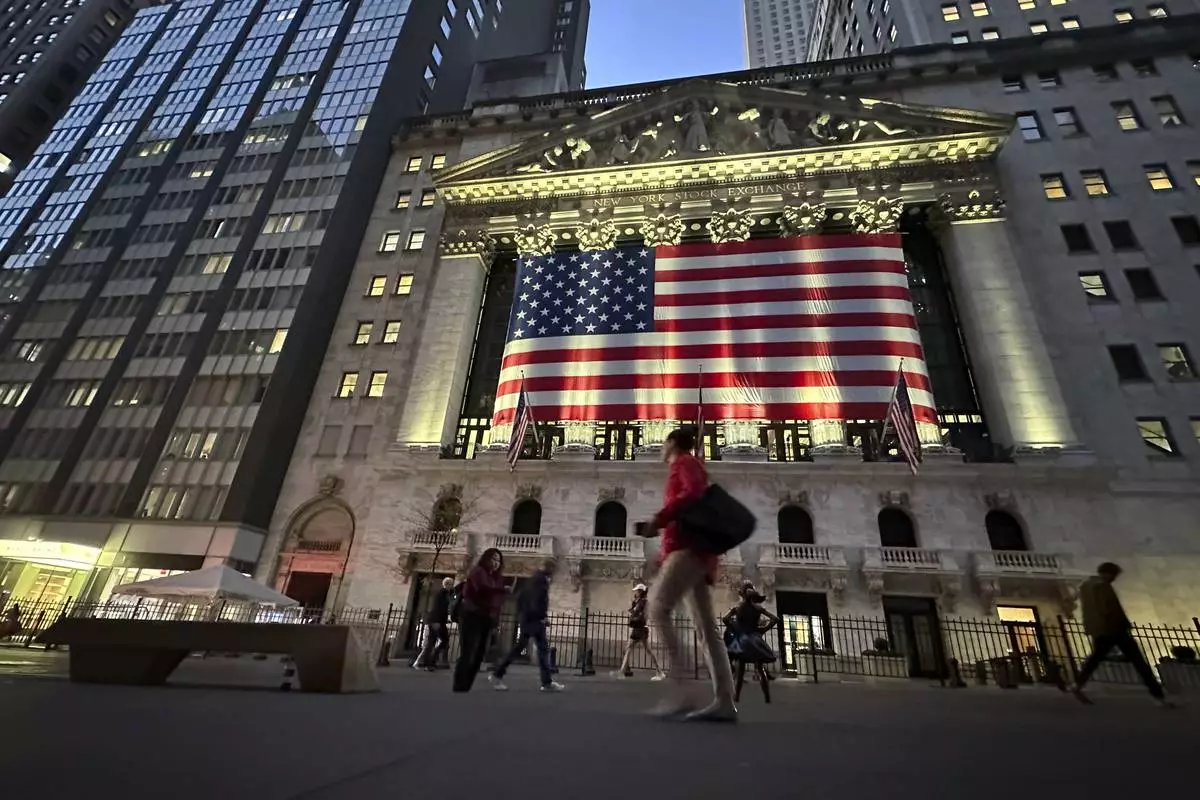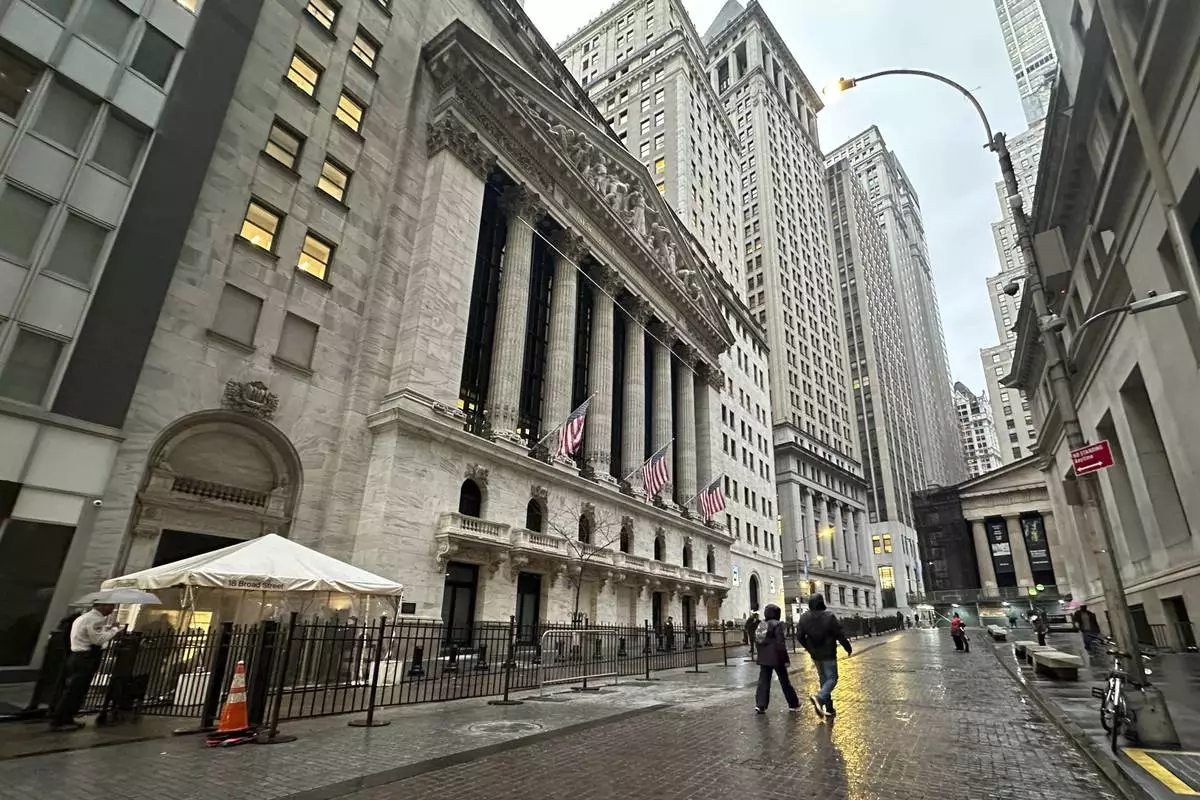TORONTO (AP) — Canada is already examining possible retaliatory tariffs on certain items from the United States should President-elect Donald Trump follow through on his threat to impose sweeping tariffs on Canadian products, a senior official said Wednesday.
Trump has threatened to impose tariffs on products from Canada and Mexico if the countries don't stop what he called the flow of drugs and migrants across southern and northern borders. He said he would impose a 25% tax on all products entering the U.S. from Canada and Mexico as one of his first executive orders.
A Canadian government official said Canada is preparing for every eventuality and has started thinking about what items to target with tariffs in retaliation. The official stressed no decision has been made. The person spoke on condition of anonymity as they were not authorized to speak publicly.
When Trump imposed higher tariffs during his first term in office, other countries responded with retaliatory tariffs of their own. Canada, for instance, announced billions of new duties in 2018 against the U.S. in a tit-for-tat response to new taxes on Canadian steel and aluminum.
Many of the U.S. products were chosen for their political rather than economic impact. For example, Canada imports $3 million worth of yogurt from the U.S. annually and most comes from one plant in Wisconsin, home state of then-House Speaker Paul Ryan. That product was hit with a 10% duty.
Another product on the list was whiskey, which comes from Tennessee and Kentucky, the latter of which is the home state of then-Republican Senate leader Mitch McConnell.
Trump made the threat Monday while railing against an influx of illegal migrants, even though the numbers at Canadian border pale in comparison to the southern border.
The U.S. Border Patrol made 56,530 arrests at the Mexican border in October alone — and 23,721 arrests at the Canadian one between October 2023 and September 2024.
Canadian officials say lumping Canada in with Mexico is unfair but say they are happy to work with the Trump administration to lower the numbers from Canada. The Canadians are also worried about a influx north of migrants if Trump follows through with his plan for mass deportations.
Trump also railed about fentanyl from Mexico and Canada, even though seizures from the Canadian border pale in comparison to the Mexican border. U.S. customs agents seized 43 pounds of fentanyl at the Canadian border last fiscal year, compared with 21,100 pounds at the Mexican border.
Canadian officials argue their country is not the problem and that tariffs will have severe implications for both countries.
Canada is the top export destination for 36 U.S. states. Nearly $3.6 billion Canadian (US$2.7 billion) worth of goods and services cross the border each day. About 60% of U.S. crude oil imports are from Canada, and 85% of U.S. electricity imports are from Canada. Canada is also the largest foreign supplier of steel, aluminum and uranium to the U.S. and has 34 critical minerals and metals that the Pentagon is eager for and investing in for national security.
“Canada is essential to the United States’ domestic energy supply,” Deputy Prime Minister Chrystia Freeland said.
Trump has pledged to cut American energy bills in half within 18 months, something that could be made harder if a 25% premium is added to Canadian oil imports. In 2023, Canadian oil accounted for almost two-thirds of total U.S. oil imports and about one-fifth of the U.S. oil supply.
Prime Minister Justin Trudeau is holding a emergency virtual meeting on Wednesday with the leaders of Canada's provinces, who want Trudeau to negotiate a bilateral trade deal with the United States that excludes Mexico.
Mexican President Claudia Sheinbaum said Wednesday that her administration is already working up a list of possible retaliatory tariffs “if the situation comes to that.”

FILE - Pumpjacks draw out oil and gas from well heads as wildfire smoke hangs in the air near Calgary, Alberta, Sunday, May 12, 2024. (Jeff McIntosh/The Canadian Press via AP, File)

FILE - GM workers use human assistance automation to weld vehicle doors at the General Motors assembly plant during the COVID-19 pandemic in Oshawa, Ontario, March 19, 2021. (Nathan Denette/The Canadian Press via AP, File)

FILE - President Donald Trump greets Canadian Prime Minister Justin Trudeau upon his arrival at the White House, June 20, 2019, in Washington. (AP Photo/Alex Brandon, File)
Losses for big technology stocks pulled major indexes lower on Wall Street. The S&P 500 fell 0.4% Wednesday. The Dow Jones Industrial Average slipped 0.3% from its record high a day earlier, and the Nasdaq composite lost 0.6%. Losses for Nvidia, Microsoft and Broadcom were the biggest weights on the market. Dell sank 12.2% after reporting revenue that fell shy of forecasts, and HP dropped 11.4% after giving a weaker-than-expected outlook. Treasury yields fell in the bond market. U.S. financial markets will be closed Thursday for Thanksgiving, and will reopen for a half day on Friday.
THIS IS A BREAKING NEWS UPDATE. AP’s earlier story follows below.
Stocks wavered in afternoon trading on Wednesday, as losses for several Big Tech companies offset gains elsewhere in the market.
The S&P 500 fell 0.4% in afternoon trading, even though more stocks were rising than falling in the index. The Dow Jones Industrial Average fell 135 points, or 0.3%, as of 3:05 p.m. Eastern time. Both indexes set records on Tuesday.
The Nasdaq composite fell 0.5%.
Losses for tech heavyweights helped pull the broader market lower. Semiconductor giant Nvidia slipped 1.6%. Its huge value gives it outsized influence on market indexes. Microsoft fell 0.9%
Several personal computer makers added to Big Tech's heavy weight on the market following their latest earnings reports.
HP sank 11.8% after giving investors a weaker-than-expected earnings forecast for its current quarter. Dell slumped 11.9% after its latest quarterly revenue fell short of Wall Street forecasts.
Gains for financial and health care companies helped counter Big Tech's downward pull. Visa rose 0.9% and Thermo Fisher Scientific added 2.3%.
The U.S. economy expanded at a healthy 2.8% annual pace from July through September, according to the Commerce Department, leaving its original estimate of third-quarter growth unchanged. The growth was driven by strong consumer spending and a surge in exports.
The update follows a report on Tuesday from the Conference Board that said confidence among U.S. consumers improved in November, but not by as much as economists expected.
Consumers have been driving economic growth, but the latest round of earnings reports from retailers shows a mixed and more cautious picture.
Department store operator Nordstrom fell 8.5% after warning investors about a trend toward weakening sales that started in late October. Clothing retailer Urban Outfitters jumped 19.1% after beating analysts’ third-quarter financial forecasts. Weeks earlier, retail giant Target gave investors a discouraging forecast for the holiday season, while Walmart provided a more encouraging forecast.
Consumers, though resilient, are still facing pressure from inflation. The latest update from the U.S. government shows that inflation accelerated last month. The personal consumption expenditures index, or PCE, rose to 2.3% in October from 2.1% in September.
Overall, the rate of inflation has been falling broadly since it peaked more than two years ago. The PCE, which is the Federal Reserve's preferred measure of inflation, was just below 7.3% in June of 2022. Another measure of inflation, the consumer price index, peaked at 9.1% at the same time.
The latest inflation data, though, is a sign that the rate of inflation seems to be stalling as it falls to within range of the Fed's target of 2%. The central bank started raising its benchmark interest rate from near-zero in early 2022 to a two-decade high by the middle of 2023 and held it there in order to tame inflation.
The Fed started cutting its benchmark interest rate in September, followed by a second cut in November. Wall Street expects a similar quarter-point cut at the central bank's upcoming meeting in December.
“Today’s data shouldn’t change views of the likely path for disinflation, however bumpy," said David Alcaly, lead macroeconomic strategist at Lazard Asset Management. "But a lot of observers, probably including some at the Fed, are looking for reasons to get more hawkish on the outlook given the potential for inflationary policy change like new tariffs.”
President-elect Donald Trump has said he plans to impose sweeping new tariffs on Mexico, Canada and China when he takes office in January. That could shock the economy by raising prices on a wide range of goods and accelerating the rate of inflation. Such a shift could prompt the Fed to rethink future cuts to interest rates.
Treasury yields slipped in the bond market. The yield on the 10-year Treasury fell to 4.25% from 4.30% late Tuesday. The yield on the two-year Treasury, which more closely follows expected actions by the Fed, fell to 4.22% from 4.25% late Tuesday.
U.S. markets will be closed Thursday for Thanksgiving, and will reopen for a half day on Friday.

A sign marking the intersection of Wall Street and South Street is shown in New York's Financial District on Tuesday, Nov. 26 2024. (AP Photo/Peter Morgan)

FILE - People pass the New York Stock Exchange on Nov. 5, 2024, in New York. (AP Photo/Peter Morgan, File)

People walk past the New York Stock Exchange on Tuesday, Nov. 26 2024. (AP Photo/Peter Morgan)

A person walks in front of the Tokyo Stock Exchange building at a securities firm Tuesday, Nov. 26, 2024, in Tokyo. (AP Photo/Eugene Hoshiko)
















